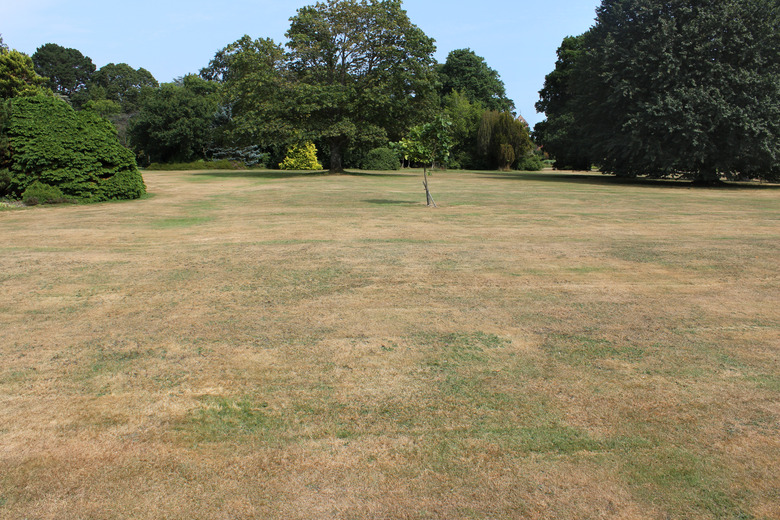Why Does Grass Turn Gray?
We may receive a commission on purchases made from links.
A critical part of maintaining proper lawn health is knowing the signs of disease and other ailments that could threaten your yard's vigor. These signs are often visible by simply observing the lawn. The sooner you can identify the disease causing the symptoms in your turfgrass, the more time you will have to save your lawn and protect its long-term health. If you notice parts of your grass turning gray, for example, several different ailments could be causing the turfgrass discoloration.
Tip
Several factors may cause your grass to turn gray, including slime mold, leaf smut and gray leaf spot.
Slime Mold on Turfgrass
Slime Mold on Turfgrass
Slime molds are one of the most common fungal ailments of turfgrass. Slime molds are caused not by fungi, as is usually the case with turfgrass diseases, but micro-organisms called saprophytes that decompose dead organic matter. If slime molds have caused gray lawn grass, you will notice intermittent patches of gray, yellow or orange blobs growing over the top of the grass blades.
Slime molds do not cause any turfgrass diseases and will not cause any damage to your lawn. You can easily remove slime molds with a rake or a jet of water from your garden hose, since the mold does not inhabit the internal vasculature of the grass but just grows over the top of it.
Leaf Smut on Grass
Leaf Smut on Grass
There are several turfgrass lawn diseases that are called leaf smuts, but the two that most commonly infect lawns are stripe smut — caused by the fungus Ustilago striiformis — and flag smut — caused by the fungus Urocystis agropyri. The earliest symptom of leaf smut diseases is gray and yellow discoloration on grass blades followed quickly by stunted new growth. As the disease progresses, black spore masses break the leaf surface and the leaf distorts further.
Leaf smut diseases should be treated with a combination of cultural management practices, including not overwatering and overfertilizing, and a penetrant/systemic fungicide treatment. Always follow package directions carefully. You can find fungicides at retail outlets such as Home Depot, Amazon and Walmart.
Gray Leaf Spot on Turf
Gray Leaf Spot on Turf
Gray leaf spot is another common turfgrass disease. It is most commonly observed on lawns that have been exposed to excessive moisture, particularly shaded or secluded parts of the lawn. The disease generally appears during humid, warm, rainy weather.
When gray leaf spot occurs on turf, ash-colored spots break out over the tops of the grass and, in severe cases, raised lesions appear on grass blades. Like leaf smuts, grey leaf spot diseases can be treated with a combination of cultural management factors, such as avoiding the use of high nitrogen fertilizers, not overwatering and by applying chemical fungicides.
Other Possibilities for Graying Grass
Other Possibilities for Graying Grass
There are a wide range of ailments that can potentially cause grass to turn gray — from simple drought stress to diseases that can kill your grass outright. Therefore, it can sometimes be difficult to accurately diagnose the condition causing your grass to turn gray. If you do not observe any of the parallel symptoms alongside gray discoloration, a local university extension office can provide a remote diagnosis if you send in a sample of the discolored grass.
